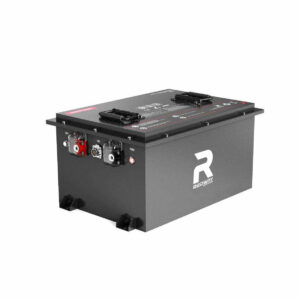How to Choose and Maintain a 48V Golf Cart Battery System?
48V golf cart battery chargers deliver 15-18A output with voltage-specific compatibility for lead-acid or lithium batteries. Models like HDK20-48V and KAISAL units feature automatic shutoff and temperature compensation. Chargers typically use 3-pin triangular plugs matching EZGO/Yamaha/Club Car systems. Lithium-compatible chargers (e.g., Hi-Power 6KWH models) employ advanced BMS communication for optimized charging cycles.
Which Battery Types Work With 48V Golf Cart Systems?
Most 48V systems use either:
- Flooded lead-acid batteries (6×8V configuration)
- AGM batteries
- Lithium-ion (LiFePO4) batteries
Lithium options like the 120Ah Hi-Power model provide 30% more usable capacity than lead-acid equivalents. Lead-acid requires monthly water checks, while lithium batteries offer maintenance-free operation but need specialized chargers.
| Battery Type | Cycle Life | Weight | Cost per kWh |
|---|---|---|---|
| Flooded Lead-Acid | 500 cycles | 62 lbs | $180 |
| AGM | 600 cycles | 58 lbs | $210 |
| LiFePO4 | 3,000 cycles | 31 lbs | $450 |

How Does Charger Amperage Affect Charging Time?
Charging time = (Battery Ah ÷ Charger A) × 1.2
A 15A charger replenishes 200Ah batteries in 16 hours vs. 13.3 hours with 18A. Higher amperage reduces charge time but increases heat generation. Smart chargers dynamically adjust amperage based on battery temperature and state-of-charge.
Modern lithium systems benefit from adaptive charging profiles. For example, a 48V 100Ah battery using a 20A charger achieves 80% charge in 4 hours through constant current phase, then switches to pulsed charging for the remaining capacity. Always verify your charger’s maximum output matches battery specifications – exceeding 0.5C charge rate (50A for 100Ah battery) may void warranties. Temperature extremes affect performance: at 32°F, charging efficiency drops 25-30% requiring longer recovery periods.
| Charger Amperage | 100Ah Battery | 150Ah Battery | Heat Generation |
|---|---|---|---|
| 10A | 12 hours | 18 hours | Low |
| 15A | 8 hours | 12 hours | Moderate |
| 20A | 6 hours | 9 hours | High |
What Maintenance Practices Extend Battery Life?
Key maintenance practices:
- Monthly terminal cleaning with baking soda solution
- Equalization charging every 30 cycles (lead-acid)
- Storage at 50-70% charge in dry environments
- Voltage checks (48.0-50.4V operational range)
Lithium batteries require monthly SOC verification and firmware updates for BMS optimization.
For flooded lead-acid batteries, specific gravity checks using a refractometer should show 1.265-1.299 across cells. Add distilled water only after full charging to prevent overflow. Lithium systems demand quarterly cell voltage checks – any cell deviating ±50mV from pack voltage indicates balancing issues. Storage protocols differ: lead-acid needs monthly topping charges while lithium maintains 60% charge for long-term storage. Always use dielectric grease on terminals and inspect cables for corrosion quarterly.
How to Diagnose Common Charging Issues?
| Symptom | Likely Cause | Solution |
|---|---|---|
| No power | Faulty AC plug | Test outlet with multimeter |
| Error codes | Thermistor failure | Check battery temperature sensors |
| Slow charging | Sulfated plates (lead-acid) | Perform desulfation cycle |
“Modern lithium systems require active cell balancing – our 48V packs use tier-1 EV-grade cells with ≤2mV deviation across cells. Always verify charger communication protocols match your BMS,” notes a Redway battery engineer. “For lead-acid users, monthly specific gravity checks prevent stratification.”
FAQ
- Q: Can I use car batteries in my golf cart?
- A: No – automotive SLI batteries lack deep-cycle capability required for golf cart use.
- Q: How often replace golf cart batteries?
- A: Lead-acid: 4-6 years; Lithium: 8-10 years with proper maintenance.
- Q: Does fast charging damage lithium batteries?
- A: When using manufacturer-approved chargers, 1C rates (120A for 120Ah) are safe. Avoid third-party “rapid” chargers exceeding specs.
